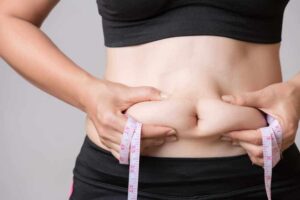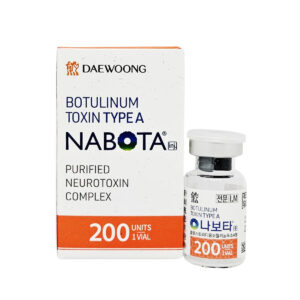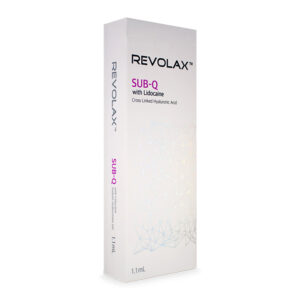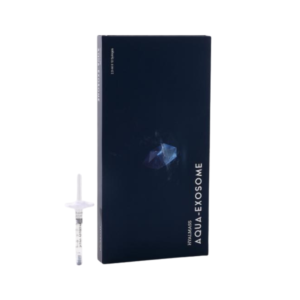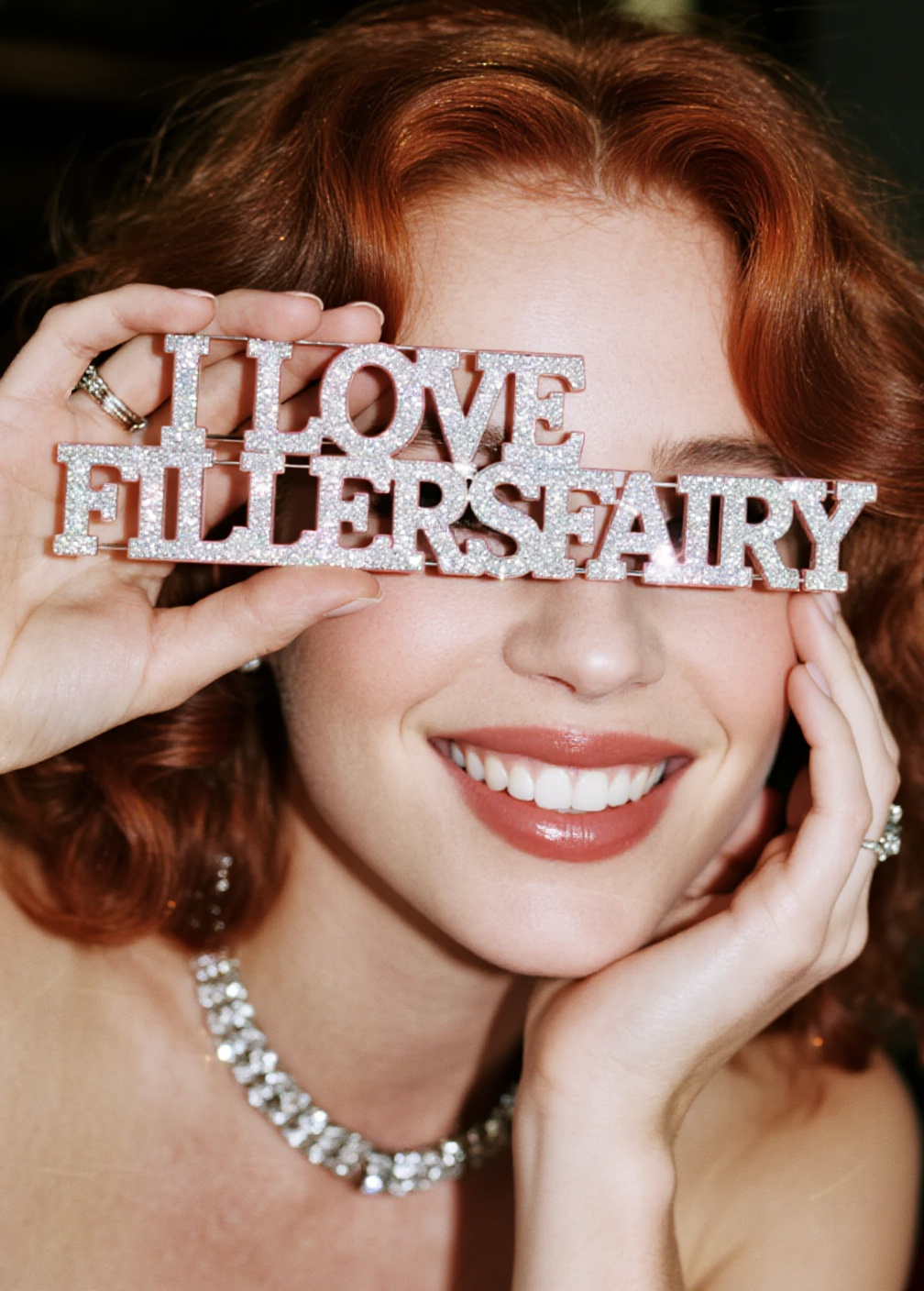No products in the cart.
Need help? Write to us support@fillersfairy.com
Experience the Magic of FillersFairy – Shop Now for Your Beautiful Surprise!
- DERMAL FILLER
- BODY FILLER
- SKIN BOOSTER
- NCTF 135HA
- DIVA EYE PN
- DIVA FACE PN
- AMI NAD+
- NadReju
- Miracle Touch BR
- Miracle Touch Up
- Regenovue Aqua Shine Plus
- Vitaran i
- Vitaran i 2
- Hyalace
- Elaxen PN
- PuriColl
- Rejeunesse Sparkle
- ASCE+ IRLV
- AestheFill
- AETER PURI EYES
- Ami Eyes
- Aqua Exosome
- ASCE Plus SRLV
- Celosome Aqua
- Curenex Glow
- Cytocare
- Exo-one
- High Inj
- Hyaron
- Juvederm Skinvive
- Kiara Reju
- Lapuroon
- Miracle
- Puri Hilo PN
- Puri Pdrn
- Purilips
- Rejuran
- Revitrane HA20
- Richesse Collafio
- Save B32
- Save B32SP
- BOTULINUM TOXIN
- FAT DISSOLVING
- HAIR TREATMENT
- IV THERAPY
- NUMBING CREAM
- PLLA/PCL/CA+
- CONSUMABLES
- THREAD
- AESTHETIC COSMETICS
- PEELING
Сall our consultants or Chat Online
+1(912)5047648
- DERMAL FILLER
- BODY FILLER
- SKIN BOOSTER
- NCTF 135HA
- DIVA EYE PN
- DIVA FACE PN
- AMI NAD+
- NadReju
- Miracle Touch BR
- Miracle Touch Up
- Regenovue Aqua Shine Plus
- Vitaran i
- Vitaran i 2
- Hyalace
- Elaxen PN
- PuriColl
- Rejeunesse Sparkle
- ASCE+ IRLV
- AestheFill
- AETER PURI EYES
- Ami Eyes
- Aqua Exosome
- ASCE Plus SRLV
- Celosome Aqua
- Curenex Glow
- Cytocare
- Exo-one
- High Inj
- Hyaron
- Juvederm Skinvive
- Kiara Reju
- Lapuroon
- Miracle
- Puri Hilo PN
- Puri Pdrn
- Purilips
- Rejuran
- Revitrane HA20
- Richesse Collafio
- Save B32
- Save B32SP
- BOTULINUM TOXIN
- FAT DISSOLVING
- HAIR TREATMENT
- IV THERAPY
- NUMBING CREAM
- PLLA/PCL/CA+
- CONSUMABLES
- THREAD
- AESTHETIC COSMETICS
- PEELING
Rejeunesse fillers are typically avoided in thin-skinned periorbital zones, where studies report 15-20% higher complication rates (nodules/vascular issues) due to delicate vasculature. High-mobility areas like oral commissures are also skipped—frequent expression risks migration, so practitioners often choose softer, more pliable alternatives here.
Table of Contents
TogglePeriocular Area
The skin around the eyes has an average thickness of only 0.5 millimeters, which is about the thickness of a sheet of A4 paper, while the skin on your cheeks is about 3 to 4 times thicker. This small area accompanies you through more than 10,000 blinking motions every day, representing an extremely high amount of movement.
More critically, this area has sparse distribution of sebaceous glands, with fewer than 20 glands per square centimeter, making it almost incapable of secreting enough oil on its own to lock in moisture. It’s akin to a desert area inherently lacking a “natural moisturizing film.” This results in the rate of water evaporation (TEWL) from the skin around the eyes being more than 5 times that of the cheeks.
Why is the Periocular Area a “Special Zone”?
This area, which is less than 1/10 the size of your palm, has a skin thickness of only 0.3 to 0.5 millimeters, approximately the thickness of an A4 paper, while the skin thickness in other areas of your face is typically above 1.5 to 2 millimeters. the density of collagen and elastic fibers that support skin elasticity is about 40% lower and about 30% lower, respectively, around the eyes compared to the cheek area.
Simultaneously, this area contains the sparsest sebaceous glands in the entire body, with a density of fewer than 20 per square centimeter, resulting in its own sebum production being only 1/50 of that in the T-zone, unable to form an effective water-locking film. This means the transepidermal water loss (TEWL) rate for the periocular skin is chronically high, and its drying speed is 5 times that of the cheeks.
1. This Layer of Skin is Too Thin: A Battle with Nearly Zero Defensive Capability
The thinness of the periocular skin is structural. Its epidermal layer (the outermost layer) is only about 50-80 micrometers thick, whereas the epidermal thickness in other facial areas (like the forehead) can reach 100-150 micrometers. More critically, the dermal layer around the eyes is only 0.2-0.4 millimeters thick, and the diameter (approximately 60 nanometers) and density (approximately 70 fibers/μm²) of the collagen fiber bundles are significantly lower than in normal skin (typically >100 fibers/μm²). This layer of skin is too thin, resulting in its transdermal absorption rate for the vast majority of topical ingredients being more than 3 times that of the cheeks.
2. Blinking Ten Thousand Times a Day: Your Eye Corners Endure “Mechanical Wear”
A normal person blinks 15-20 times per minute, totaling over 15,000 blinks during 16 waking hours. This is not only a physiological necessity but also a continuous mechanical movement. With each blink, the orbicularis oculi muscle contracts, and the skin folds accordingly. Before the age of 25, thanks to ample collagen and elastic fibers, the skin can quickly snap back to its original state after each muscle relaxation. But after 25, as the dermal matrix decreases by about 1% annually, the skin’s ability to rebound begins to decline. Frequent folding is like repeatedly creasing a piece of paper, eventually leaving permanent creases. Dynamic wrinkles (like crow’s feet) typically appear initially around 25-30 years and gradually solidify into static wrinkles during the 35-40 year period. Research indicates that the skin at the outer eye corner endures stretching deformation exceeding 15% of its surface area daily; this high-frequency mechanical stress is the primary physical factor leading to collagen fiber breakage and wrinkle formation.
3. A Natural “Moisturization Challenge”: A Desert Zone Lacking Both Oil and Water
The integrity of this film determines the rate of water loss. The periocular area has an extremely low density of sebaceous glands, less than 20 per square centimeter, whereas the forehead’s sebaceous gland density can be as high as 400-800 per square centimeter. This directly results in minimal autonomous oil secretion from the periocular skin, making it ineffective at locking in moisture. Transepidermal Water Loss (TEWL) is a key indicator of skin barrier function; the TEWL value around the eyes is typically more than 5 times higher than in areas with robust sebum production. This means that even if you supplement sufficient moisture to the eye area, without follow-up effective occlusive products (like eye creams containing ceramides, cholesterol, fatty acids) to “seal it in,” this moisture will rapidly evaporate within 1-2 hours, and the skin will immediately return to a dry state, exacerbating the formation of dry lines.
4. Slow Blood Flow, Poor Circulation: The Breeding Ground for Dark Circles Forms Like This
The skin under the eyes is rich in blood vessels and lymphatic systems, but the blood flow speed is relatively slow. Studies have found that the blood flow speed in the microcirculation around the eyes is about 20% slower than in most parts of the body. When blood pools here due to staying up late, fatigue, or aging (decreased vascular elasticity), hemoglobin becomes deoxygenated and converts to dark methemoglobin, showing through the thin skin (especially the lower eyelid skin, which is only 0.1-0.2 millimeters thick) as a bluish-purple “vascular dark circle.” Simultaneously, the clearance efficiency of metabolic waste products (like breakdown products of heme iron) is reduced due to poor lymphatic drainage. After age 35, due to fat pad atrophy and skin laxity, a shallow “tear trough” forms under the eye. This shadow further accentuates the visual effect of “structural dark circles,” making improvement require a comprehensive approach from three dimensions: circulation, pigment, and structure, often beyond the capability of a single skincare product.
5. Trouble When Injured: Repair Capacity is Only Half That of Other Areas
When normal skin suffers minor physical or chemical damage, the proliferation and migration speed of keratinocytes is about 0.2-0.3 micrometers per hour to complete the re-epithelialization process. But around the eyes, due to relatively less abundant blood supply and inherently slower cell turnover rate (the skin cell turnover cycle around the eyes is about 21-28 days, slightly longer than the facial average of 28 days), its repair speed is 30%-50% slower. This means that if the eye area barrier is damaged due to improper product use (like high-concentration retinol, AHAs), causing redness, swelling, flaking, stinging, the recovery period could be as long as 4-6 weeks, or even longer. During this time, the damaged barrier cannot effectively resist external irritants, water loss intensifies, creating a vicious cycle of “barrier damage – dryness – inflammation – further damage,accelerates aging. Therefore, adopting a “conservative treatment” strategy for the eye area, avoiding damage, is far more important than aggressively pursuing efficacy.
Core Care Objectives
Data shows that in cases of periocular barrier damage caused by using high-concentration active ingredients (like AHAs, Retinol), over 70% require at least 4 weeks of repair, and during this period, Transepidermal Water Loss (TEWL) can soar to more than twice the normal value, accelerating the formation of dry lines. In contrast, a 12-week clinical observation found that consistently using eye creams focused on moisturizing and repair can stably increase periocular skin hydration by 25%-30%, thereby reducing the visibility of dryness-induced fine lines by nearly 40%. The essence of defensive anti-aging is investing at least 60% of care resources into consolidating the barrier and basic moisturizing; the long-term return on this investment far exceeds any high-risk skin rejuvenation treatments.
1. Spend Money on the Invisible “Foundation”: Why Moisturizing is the Most Cost-Effective Anti-Aging
The Transepidermal Water Loss (TEWL) of periocular skin is inherently 5 to 8 times higher than areas of the face with strong sebum secretion. This means that even if you do nothing, moisture from the skin around your eyes is evaporating at an alarming rate. When skin hydration falls below 10%, the stratum corneum becomes brittle, and microscopic cracks directly manifest as the dry lines and fine lines you see. A dermatological study indicates that increasing and stabilizing the hydration level of periocular skin from 12% to above 18% can make over 50% of dry lines visually less noticeable.
Therefore, the first and most crucial step in defensive anti-aging is to prioritize moisturizing at all costs. This is equivalent to building solid water conservancy facilities for barren land. You need to use products containing low molecular weight hyaluronic acid (MW < 10kDa) to attract water, combined with ingredients that mimic the skin’s own sebum, such as ceramides, cholesterol, and free fatty acids, in a near 3:1:1 golden ratio to build an artificial barrier. The effectiveness of this barrier can directly reduce the rate of water loss by over 70%, with effects lasting 8-12 hours. For every 10% increase in skin hydration, the visibility of dry lines can be reduced by about 15%. The cost of this investment typically only accounts for 30%-40% of a high-end anti-wrinkle eye cream but is the cornerstone determining the effectiveness of all subsequent anti-aging efforts.
2. Improving Circulation is “Dredging” Under the Eyes: Physical Methods to Combat Dark Circles and Puffiness
Bluish-purple vascular dark circles and morning puffiness mostly stem from inefficient microcirculation around the eyes. The diameter of capillaries under the eyes is only about 8-10 micrometers, and the blood flow speed is about 20% slower than in other parts of the body. When you stay up late, are fatigued, or experience age-related decreased vascular elasticity, blood tends to pool here. Deoxygenated hemoglobin appears dark, showing through the skin that is only 0.1-0.2 millimeters thick, resulting in dark circles.
The most effective defensive strategy for this issue is to use ingredients that promote circulation. Caffeine at a concentration of 5% has been proven to cause capillary constriction by stimulating beta-receptors, temporarily reducing the appearance of puffiness by about 20%-30% within 15 minutes. Combined with 2%-3% niacinamide, it can improve dark circles in the long term by enhancing the skin barrier and inhibiting excessive vasodilation. Clinical data shows that after using eye products containing the above ingredients twice daily for 8 weeks, about 65% of subjects self-assessed mild to moderate improvement in dark circles. Additionally, spending 60 seconds daily gently pressing with the ring finger from the inner corner along the orbital bone to the temple can manually assist lymphatic drainage, removing accumulated tissue fluid, providing an immediate effect on relieving morning puffiness.
3. Gentle Wrinkle Fighting is a Long-Term Battle: Accept 10% Improvement, Avoid 100% Risk
Only after ensuring barrier health and adequate hydration should one consider active intervention against wrinkles. But the strategy here must be “gentle” and “persistent.” The skin around the eyes cannot tolerate facial-level concentration. For example, the adaptation period for 0.1% concentration retinol on the face might be 2 weeks, but around the eyes, the probability of causing severe peeling and stinging exceeds 40%.
Therefore, the preferred defensive strategy is peptide ingredients. For instance, Acetyl Hexapeptide-8, by inhibiting the excessive release of neurotransmitters (catecholamines), can reduce muscle contraction intensity by about 30%. This means the depth and frequency of dynamic wrinkles caused by expressions will decrease. A double-blind test found that using a product containing 10% Acetyl Hexapeptide-8 twice daily for 24 weeks resulted in an average reduction of 15%-20% in the depth and number of periocular wrinkles, with zero adverse reaction reports. Another strategy is to use Boswellia Serrata Extract at concentrations of 5%-10%, which stimulates glycosaminoglycan synthesis in the dermis, supporting the dermal structure like filling a sponge, but this process is extremely slow, typically requiring over 6 months to observe subtle improvements. You must accept that around the eyes, a solution that safely improves wrinkles by 10% without irritation is far superior to one promising 50% improvement but carries a high risk of barrier damage.
4. Resource Allocation Principle: How You Should Spend Your Time and Budget
Based on the priority of the above three objectives, a rational care budget and time allocation plan should be as follows:
- Budget Allocation:
- Moisturizing and Repair Products (Eye Cream/Serum): 60% of the total budget. This is a fixed investment you must ensure, for purchasing products with solid formulations containing the aforementioned barrier repair ingredients. The suggested price range is 300-500 RMB, as this range usually guarantees sufficient amounts of effective ingredients.
- Circulation-Boosting Products (Eye Serum): 25% of the total budget. For purchasing targeted serums containing high concentrations of caffeine, niacinamide, etc.
- Gentle Anti-Wrinkle Products (Functional Serums): 15% of the total budget. For investing in peptides, low-concentration Boswellia, and other gentle anti-aging ingredients.
- Daily Care Time Allocation (Approx. 2 minutes):
- Immediate Moisturizing After Cleansing (Golden 60 seconds): Within 60 seconds after washing your face, immediately apply moisturizing eye cream. At this time, the stratum corneum’s water content is high, and product absorption and locking efficiency are optimal.
- Layering Efficacy Ingredients (30 seconds): After the moisturizing product is absorbed, layer the functional serum, and spend 30 seconds on gentle massage to promote absorption and circulation.
- Sunscreen Film Formation (30 seconds): During the day, after eye care, leave at least 30 seconds for the products to fully absorb before applying SPF30+/PA+++ eye area sunscreen to avoid pilling.
Product Ingredient Selection
In the periocular area, this “ingredient testing ground” of less than 50 square centimeters, the cost of choosing the wrong active is much higher than on the face. Data shows that the penetration efficiency of ingredients with a molecular weight greater than 500 Daltons here is less than 30%, while the risk of sensitization from irritating ingredients (e.g., alcohol content >5%) is 3 times that of the cheeks.
Truly effective periocular ingredients must follow the iron rule of “low molecular weight, high affinity, low irritation.” For example, Acetyl Tetrapeptide-5 at 1% concentration can achieve an effectiveness rate of up to 67% in improving vascular dark circles, whereas hyaluronic acid at a concentration below 0.5% sees its moisturizing effect diminish by 80% within 2 hours.
1. Moisturizing Ingredients: Don’t Just Look at Hyaluronic Acid; Molecular Weight and Formulation are Key
- Core for Water Absorption: The molecular weight of low molecular weight hyaluronic acid (sodium) must be below 10,000 Daltons to effectively penetrate deep into the stratum corneum. 1% concentration of low molecular weight hyaluronic acid can increase skin hydration by 70% within 30 minutes, but its drawback is weak occlusive ability, allowing moisture to be lost again easily.
- Key for Locking in Moisture: Needs to be combined with skin-identical lipid ingredients (like Ceramide 1, 3, 6-II, Cholesterol, Fatty Acids). Research shows that when ceramides are combined with cholesterol and free fatty acids at an equimolar ratio (1:1:1) or a 3:1:1 ratio, barrier repair efficiency is highest, reducing transepidermal water loss by 40%-60% within 24 hours.
- Boosting Ingredients: Glycerin, Panthenol (Vitamin B5, suggested concentration 3%-5%) not only attract water but also soothe irritation. An excellent moisturizing eye cream should list at least 2-3 types of the aforementioned core ingredients within the first five positions of its ingredient list.
An eye cream containing only single, high molecular weight hyaluronic acid (MW over 1 million Daltons) can only form a film on the skin surface, and its actual moisturizing effect typically lasts less than 2 hours.
2. Circulation Ingredients: If Caffeine Concentration is Less Than 2%, You’re Just Washing Your Face
- Caffeine: The effective concentration threshold is 2%, with the ideal concentration around 5%. It works by stimulating beta-adrenergic receptors, causing capillary constriction, thereby reducing blood stasis. It has an immediate effect on relieving morning puffiness and vascular dark circles. A human experiment showed that using an eye gel containing 5% caffeine reduced eyelid puffiness by about 25% after 15 minutes. However, the effect is temporary, usually lasting 4-6 hours.
- Vitamin K: Especially its bioactive form – Vitamin K1 (Phytonadione). It helps activate gamma-glutamyl carboxylase in the body, promoting the coagulation process, thereby reducing blood that leaks into tissues due to capillary rupture, effective for bruise-like dark circles. But it works slowly, requiring continuous use for 8-12 weeks to see initial improvement.
- Niacinamide: A concentration between 2%-5% is relatively safe and effective. It can inhibit the release of Vascular Endothelial Growth Factor (VEGF), reducing excessive blood vessel formation and dilation, while also inhibiting melanin transfer to epidermal cells. Clinical reports indicate that after using a product containing 4% niacinamide twice daily for 8 weeks, 35% of subjects perceived visible lightening of dark circles.
3. Anti-Wrinkle Ingredients: Peptides are a Slow Process, Retinol is High Risk
- Peptides: These are the “cruise missiles” for anti-wrinkle around the eyes, acting precisely and gently.
- Acetyl Hexapeptide-8: By inhibiting the formation of the SNARE complex, it decreases the excessive release of neurotransmitters (Acetylcholine), thereby reducing muscle contraction signals by about 30%. Clinical data shows that using a product containing 10% Acetyl Hexapeptide-8 for 24 weeks can reduce wrinkle depth by an average of 15%. It works best on dynamic expression lines.
- Palmitoyl Tripeptide-1 and Palmitoyl Tetrapeptide-7: Stimulate fibroblasts, promoting the synthesis of collagen (Type I, III) and glycosaminoglycans. These are “signal” peptides, working slowly but fundamentally improving skin quality, typically requiring 3-6 months to observe subtle changes.
- Retinol: Using it around the eyes is a high-risk decision. Even at concentrations as low as 0.01%-0.03%, about 20% of people may experience dryness, peeling, stinging – the “Retinol reaction.” If you must try, start with the lowest concentration, use it no more than 2-3 times per week, and always apply a moisturizer first as a base. For the eye area, the risk-reward ratio of Retinol is much lower than that of peptides.
Lips and Perioral Mucosa
Data shows that the skin thickness of the lips is only about one-third of other facial areas, approximately 0.5 mm, and there are almost no sebaceous glands or sweat glands distributed there. This means it inherently lacks a self-moisturizing “hydraulic system,” and its water evaporation rate is 3 to 5 times that of cheek skin.
In dry environments with humidity below 30%, over 70% of people experience lip tightness. the average person’s daily eating, drinking, and talking subject the lips to thousands of frictions, and up to 85% of lip aging signs (such as vertical lip lines, pigmentation) stem from long-term unprotected UV damage.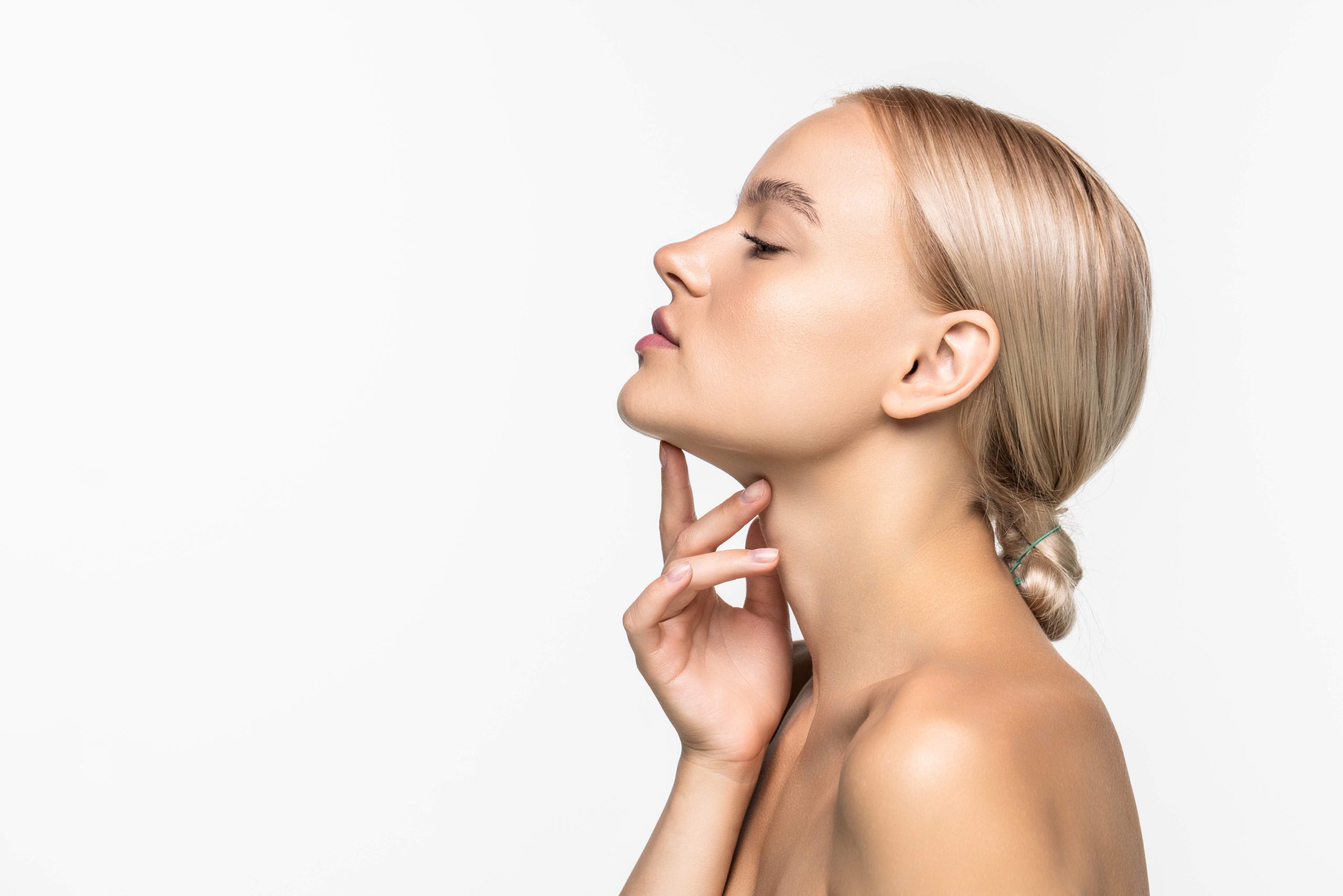
Root Causes of Problems
Data shows that the stratum corneum thickness of the lips is about 5-10 micrometers, only one-tenth of the thinnest part of the face, the cheeks (about 50-60 micrometers), and even thinner than the eyelids (about 15 micrometers). The sweat gland density in this area is 0, and the number of sebaceous glands is also 0, meaning it completely lacks the ability to self-moisturize and form a protective sebum film.
At an environmental humidity of 50%, the Transepidermal Water Loss rate of the lips is as high as about 1.5% water loss per 30 minutes, which is over 3 times that of the cheek area. Additionally, the average number of daily lip movements per person exceeds 7000 times (including talking, swallowing, expressions), making this area the focal point of the highest mechanical stress on the face.
1. Naturally Thin Skin: The Defensive Power of a Tissue Paper
Its epidermal layer averages only 40-50 micrometers thick (facial skin averages 100-150 micrometers), and the most critical protective layer – the stratum corneum – consists of only 3-5 layers of flattened dead cells, with a thickness of less than 10 micrometers. In contrast, the stratum corneum thickness of palms and soles can reach 400-600 micrometers.
This ultra-thin structure brings two fatal weaknesses:
- Physical Barrier is Almost Non-Existent: Its resistance to daily friction is extremely poor. Using standard textile friction tests (pressure 50g/cm²), lip skin shows visible micro-damage after about 300 cycles of friction, while cheek skin can withstand over 1500 cycles. This is why frequent wiping or picking at dead skin causes immediate damage.
- Extremely High Permeability to Chemicals: The rate of transdermal absorption of substances is inversely proportional to stratum corneum thickness. This means that for the same skincare ingredient, the penetration rate and concentration of the active (or irritant) on the lips may be 5-8 times that on the face. This is the fundamental reason why a 0.1% concentration Retinol product tolerated on the face can easily cause severe peeling and stinging around the lips – the active penetrates the almost non-existent barrier directly into the deeper layers.
2. Built-in “Dehumidifier”: The Physiological Setting of a Desert Climate
The lips are the only absolutely dry area on the face. Human skin forms a layer of “hydro-lipid film” about 0.004-0.008 mm thick through sebum secretion (approximately 0.1-0.5 μg/cm²/hour) from sebaceous glands and sweat from sweat glands. This film maintains a weakly acidic pH of 4.5-6.0, serving as the first line of defense for locking in moisture and resisting microbes.
On the lips, both systems are completely absent:
- Zero Oil Secretion: The absence of sebaceous glands means the lips cannot produce any “natural lip balm” to lock in moisture. In a standard environment of temperature 22°C and humidity 50%, the moisture content of unprotected lips can drop from a healthy about 60% to about 35% within 30 minutes, entering a dry state.
- Zero Sweat Regulation: The absence of sweat glands prevents them from regulating local temperature increases through evaporative cooling. When drinking hot beverages above 60°C, the surface temperature of the lips can rise by 5-8°C within 3 seconds, and due to slow heat dissipation, they are more prone to low-temperature burns and capillary dilation.
3. Perpetual Friction Machine: Fatigue Damage Under Ultra-High Load
- Basic Metabolic Activities: A normal person swallows saliva about 600-800 times per day, each swallow accompanied by the closing contact of the upper and lower lips. This alone means at least 600 regular compressions per day.
- Verbal Communication: According to phonetic analysis, speaking at a normal pace (about 150 words/minute) requires the lips to perform about 20-30 fine movements of opening, closing, rounding, spreading, etc., per minute. Calculating based on 2 hours of daily conversation adds another about 3000 mechanical movements.
- Facial Expressions and Eating: Actions like smiling and chewing further increase the load.
Core Care Three-Step Process
In lip care, over 90% of people misdirect 90% of their budget and effort. Data reveals that one instance of粗暴的 makeup removal friction (pressure exceeding 50g/cm²) can cause a deficit rate of lip stratum corneum cells reaching 15%, requiring at least 48 hours to recover. Choosing a cleanser with a pH higher than 7.5 can damage the lips’ fragile acid mantle (ideal pH 5.5-6.0), instantly increasing the water loss rate by 20%.
In terms of moisturizing, the penetration rate of oils with a molecular weight less than 500 Daltons is over 3 times that of ingredients over 1000 Daltons. But incorrectly using heavy petrolatum to seal dry lips is like laying plastic sheeting over a desert, unable to actively replenish moisture to the dehydrated areas of the stratum corneum at a depth of 20 micrometers. As for sun protection, the lips receive 1.3 times the UVA radiation of the eye area, but less than 5% of people use SPF lip balm daily.
1. Cleansing: Don’t Let Makeup Removal Become Secondary Damage
The goal of lip cleansing is to: within 20 seconds, with zero or minimal friction, 100% remove makeup and sunscreen, while ensuring the skin’s pH fluctuation does not exceed ±0.5.
- Product Selection Parameters:
- pH Priority: Prioritize eye & lip specific makeup removers with a pH between 5.0-6.5. Alkaline products (pH >7.5) dissolve intercellular lipids, widening the stratum corneum gaps by about 0.5-1 nanometer – seemingly negligible but enough for irritants to enter.
- Balance Cleansing Power and Mildness: Biphasic (oil-water) makeup removers are the optimal solution. Their oil phase (e.g., Isododecane, Caprylic/Capric Triglyceride) efficiently dissolves long-wear lip coatings (containing film-forming polymers), with a cleaning efficiency (removal rate)可达 99% or higher; while the water phase (containing humectants like Glycerin, Panthenol) can instantly replenish moisture, preventing tightness.
| Product Type | Optimal pH Range | Cleansing Time (seconds) | Suggested Friction Count | Suitable Scenarios |
|---|---|---|---|---|
| Biphasic (Oil-Water) | 5.5 – 6.5 | Soak for 10-15 sec, gently wipe 1-2 times | ≤ 3 times | Long-wear lip tint, waterproof sunscreen |
| Micellar Water | 5.0 – 6.0 | Soak for 5-8 sec, gently wipe once | ≤ 2 times | Daily lipstick, light sunscreen |
| Oil Balm/Gel | 6.0 – 7.0 | Massage 20-30 sec, emulsify and rinse | 0 times (rinsing) | Extreme sensitivity, existing damage |
- Standard Operating Procedure (SOP):
- Amount: Shake the remover well, saturate a cotton pad (approx. 2 cm diameter area), using about 1.5 ml.
- Soaking: Precisely cover the lips, press to fit, hold for 10-15 seconds. This time is sufficient for the oil phase to dissolve about 80% of the lip product components.
- Wiping: Wipe unidirectionally (following the direction of lip lines) gently, with a force that allows the cotton pad to move without significant resistance. Keep the total number of wipes to 3 times or fewer.
2. Moisturizing: Applying Oil Doesn’t Automatically Mean Moisturizing
- Ingredient Mechanisms and Selection Matrix:
| Ingredient Type | Representative Ingredients | Molecular Weight (Da) | Mechanism of Action | Efficacy Data (in vitro/clinical) |
|---|---|---|---|---|
| Occlusives | Petrolatum, Mineral Oil | >800 | Form a hydrophobic film on the surface | TEWL reduction over 90% |
| Humectants | Glycerin, Hyaluronic Acid | Glycerin: 92; HA: Tens of thousands to millions | Attract water from air/dermis | Glycerin can increase stratum corneum hydration by approx. 20%-30% at 60% humidity |
| Repair Agents | Ceramides, Squalane | Approx. 600-800 | Integrate into stratum corneum, supplement lipids | After 28 days of continuous use, skin barrier integrity improved by 50% |
- Golden Combinations and Application Sequence:
- Night Repair (Up to 8 hours): Use the “sandwich” method. After cleansing lips, while slightly damp (in humidity >60% environment or after misting with a little thermal water), immediately apply Glycerin or Hyaluronic Acid serum (amount 0.05ml) as the “water base.” Wait 20 seconds for absorption, then apply a thick layer (amount about 0.2g) of an occlusive product based on Petrolatum or Lanolin. This method can maintain lip hydration at a healthy level of 45%-55% for 8 hours.
- Daytime Maintenance (Reapply every 2-3 hours): Choose a composite formula lip balm containing Glycerin + Squalane + Ceramides. Its texture is light, molecular weight is moderate, providing moisture without affecting the film formation of subsequent sunscreen products. Before reapplication, gently press with a damp tissue to remove surface dust and dead skin, then apply.
3. Sun Protection: The Most Easily Overlooked Aging Accelerator
- Quantifying UV Damage:
- UVA (Main Cause of Aging): Penetrates deep into the dermis, accounting for 90%-95% of UV radiation reaching the lips. Its intensity is strongest between 10 am and 4 pm daily and can penetrate glass. It is the culprit behind collagen degradation and elastic fiber breakdown in the lips, contributing to about 80% of lip photoaging signs.
- UVB (Cause of Burning): High energy, primarily affects the epidermis, main cause of lip redness and peeling after sun exposure.
- Product Indicators and Usage Standards:
| Protection Indicator | Meaning | Minimum Effective Value | Recommended Value | Protection Efficiency Interpretation |
|---|---|---|---|---|
| SPF Value | UVB Protection | SPF 15 | SPF 30 | SPF30 blocks 96.7% UVB, SPF50 blocks 98% |
| PA Value | UVA Protection | PA+ | PA+++ | PA+++ means UVA protection is 8-12 times that of unprotected skin |
| Critical Wavelength | Broad Spectrum Ability | ≥ 370 nm | ≥ 380 nm | Longer wavelength indicates more comprehensive protection against long-wave UVA |
- Application Dose and Reapplication Frequency:
- Single Application Amount: To achieve the labeled SPF, evenly apply 0.15 grams of sunscreen lip balm (approx. swiping 3-4 times horizontally) to the lips and the 2 mm area around them.
- Reapplication Frequency: In indoor environments, reapply every 4 hours. During outdoor activities, especially after sweating, swimming, or frequent lip wiping, shorten the interval to every 60-90 minutes. Drinking from the rim of a cup, avoiding direct contact with the lip balm, can extend the effective protection time by about 30%.
Advanced Care Plans
Data shows that an economical plan (monthly budget < 100 RMB) can maintain basic lip hydration at the passing level of 35%-40%, primarily addressing dryness and flaking. When the monthly budget increases to the 100-300 RMB range, products begin to include active ingredients at concentrations of 3%-5% (like Niacinamide, specific peptides), which can increase lip collagen density by about 8% within 8 weeks, and improve resistance to daily oxidative damage by 50%.
High-end plans (>300 RMB) introduce patented transdermal ingredients with molecular weights less than 500 Daltons and biomimetic repair technologies, aiming to reduce lip line depth by 15%-20%, an effect close to 30%-40% of mild aesthetic procedures.
Economical Plan Under 100 RMB: Spend Money on the Essentials, Focus on Ultimate Cost-Effectiveness
The core goal of this tier is effective moisturizing and basic repair, refusing to pay for any brand premium or fancy concepts. Every penny must be spent on ingredients that act directly on the stratum corneum.
Night repair is the top priority in this plan. Applying a thick layer of pure petrolatum or medical-grade white petrolatum before bed costs about 0.3 RMB per gram. Its occlusiveness is excellent, forming an inert protective film about 0.01 mm thick on the lips, reducing the nightly water loss rate from a baseline of about 1% per hour to less than 0.1%. Perform intensive care 1-2 times per week: use a warm towel (temperature controlled at 40-45°C) to compress the lips for 90-120 seconds to soften the stratum corneum. Then, mix edible white sugar (granule diameter about 0.2-0.5 mm) with a spoonful of honey (contains natural fructose and amino acids), and gently massage in circles for 20-30 seconds before rinsing. This physical exfoliation process can instantly remove about 30% of dead corneocytes, increasing the absorption rate of subsequent moisturizing ingredients by 20%. For daytime care, choose simple twist-up lip balms whose first three ingredients should be occlusives like Petrolatum, Polybutene, Beeswax. Apply about 0.02 grams per use, reapplying 3-5 times daily.
Advanced Plan 100-300 RMB: Paying for “Active Ingredients,” Initiating the Anti-Aging Project
When the monthly budget exceeds the 100 RMB threshold, you gain entry to use “active ingredients with clear targeted efficacy.” The core of formulations in this tier are functional ingredients at concentrations between 2% and 5%.
The daytime focus is defense and anti-oxidation. Choose a lip serum containing Vitamin C derivatives (like Ascorbyl Glucoside, concentration 3%-5%). These ingredients are stable, can neutralize free radicals generated by UV rays, reducing oxidative damage by about 40%. Use before applying sunscreen lip balm, about 0.05 ml per use. The nighttime core task is repair and collagen boosting. In this price range, you can find lip creams containing Acetyl Octapeptide-3 or Palmitoyl Tripeptide-1. These peptide ingredients can interfere with neurotransmitter release or act as signaling molecules for collagen synthesis. Research shows that continuous use of a product containing 5% matrix peptides for 56 days can increase the density of collagen fibers in the lip dermis by about 8%, thereby supporting the skin from within and fade vertical lip lines. Another effective ingredient is Niacinamide (concentration 2%-4%), which improves perioral darkening by inhibiting the transfer of melanosomes from melanocytes to keratinocytes, while also strengthening the skin barrier. When using, wait for the serum to be fully absorbed (about 60 seconds) before layering the lip cream to ensure transdermal penetration of the active ingredients.
High-End Plan Over 300 RMB: Investing in Cutting-Edge Technology, Pursuing Biomimetic Repair
Products may include extremolyte protection molecules like Ectoin. Its working principle is to form a “hydration shell” around cells; at a concentration of 0.5%-1%, it provides strong protection, reducing UV damage to lip keratinocytes by over 50%. Another star ingredient is Ergothioneine, a natural antioxidant with an antioxidant capacity 10-30 times that of Vitamin C, but it is extremely expensive and unstable; only high-end products contain it in its active form.
The care routine is also upgraded accordingly. Using a lip mask 1-2 times per week becomes standard. High-end lip masks often use bio-cellulose material, with fiber diameters of only 20-50 nanometers, perfectly conforming to lip curves, pressing over 95% of the essence’s active ingredients into the skin within 15 minutes. These essences are often complex formulas, possibly containing 10% high-concentration composite peptides, 1% encapsulated Retinol derivative (HPR), etc. Daily care emphasizes “penetration enhancement first, repair second.” Start with a serum using penetration-enhancing technology (like liposome encapsulation), followed by a repair cream containing Ceramide complexes (simulating skin lipid ratios) and Phytosphingosine, aiming to improve lip barrier function to over 90% of a healthy level. The effect of this plan is not only to improve dryness but also to advance the physiological function of lip skin towards a younger state.
Recommended Products
Revolax Sub-Q Lidocaine Injectable Gel 1.1ml – 24mg/ml | Hyaluronic Acid Filler
$28.50
Add to cart
Rated 4.50 out of 5
Manla Kar High-Purity Multi-Collagen Solution – Medical-Grade Ampoule System
$45.50
Add to cart
Rated 4.50 out of 5




